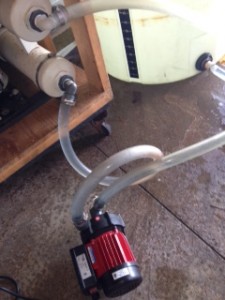One of the things I never expected going into the field of oceanography was how much time I would be spending as a plumber. In order to run experiments on a research ship and at a field station, you need to make sure your experimental set up is as close to natural conditions as possible. This ensures the most realistic conditions so that you can use responses observed in smaller-scale studies to model or extrapolate responses that might occur on larger scales, such as an entire population of organisms or geographic regions such as entire oceans. When studying Antarctic organisms, this means everything needs to be incubated in very cold water. Bottles containing organisms need to be kept in tanks that are constantly circulated with fresh cold seawater. You can now purchase water-jacketed beakers and containers that you can connect hoses to and recirculate water from a temperature-controlled water bath. Different kinds of pumps for pumping seawater require different types and sizes of tubing. Even using gases, such as carbon dioxide, in experiments requires specific types of regulators, connectors, control valves, and tubing types and sizes.
For this project alone, we need 16 different types/sizes of tubing, 27 different types/sizes of tubing connectors, and 7 different sizes of luerlok connectors, and 6 different sizes of wrenches (so far…). I wonder if I will ever acquire an honorary PhD in plumbing…



Comments are closed.